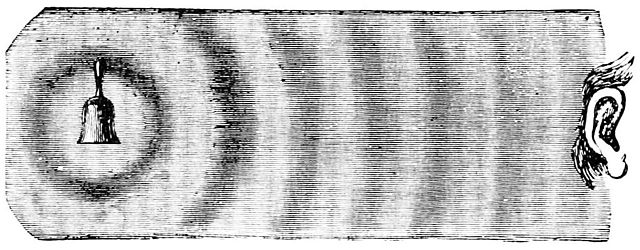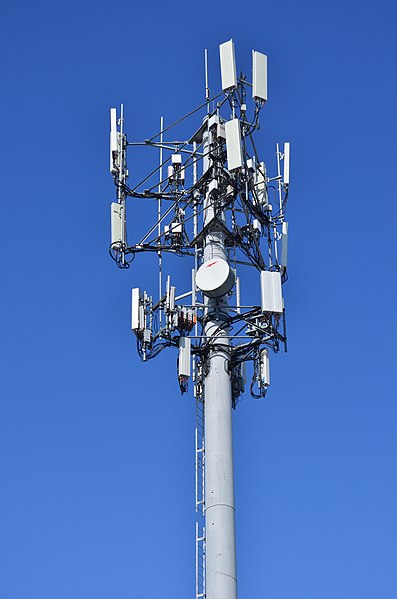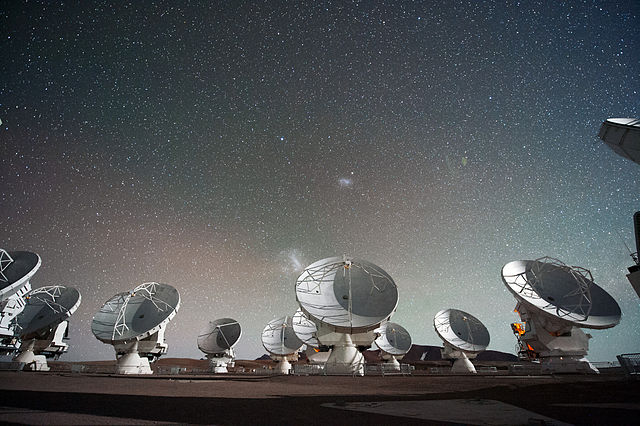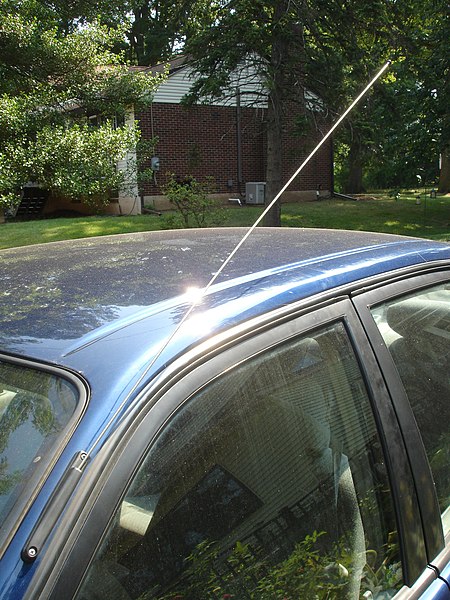An isotropic radiator is a theoretical point source of waves which radiates the same intensity of radiation in all directions. It may be based on sound waves or electromagnetic waves, in which case it is also known as an isotropic antenna. It has no preferred direction of radiation, i.e., it radiates uniformly in all directions over a sphere centred on the source.
A depiction of an isotropic radiator of sound, published in Popular Science Monthly in 1878. Note how the rings are even and of the same width all the way around each circle, though they fade as they move away from the source.
In radio engineering, an antenna or aerial is the interface between radio waves propagating through space and electric currents moving in metal conductors, used with a transmitter or receiver. In transmission, a radio transmitter supplies an electric current to the antenna's terminals, and the antenna radiates the energy from the current as electromagnetic waves. In reception, an antenna intercepts some of the power of a radio wave in order to produce an electric current at its terminals, that is applied to a receiver to be amplified. Antennas are essential components of all radio equipment.
Multiple patch (rectangular) antennas found atop a Cellular Tower
Antennas of the Atacama Large Millimeter/submillimeter Array
An automobile's whip antenna, a common example of an omnidirectional antenna
Half-wave dipole antenna





